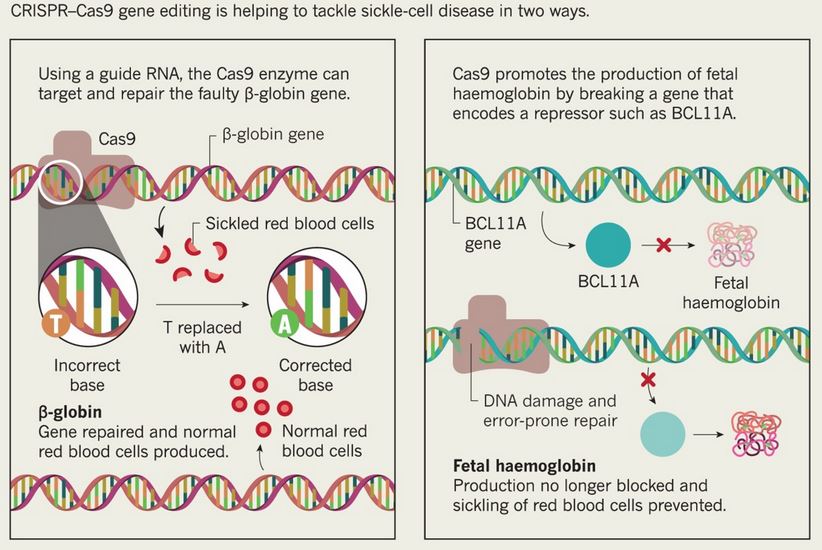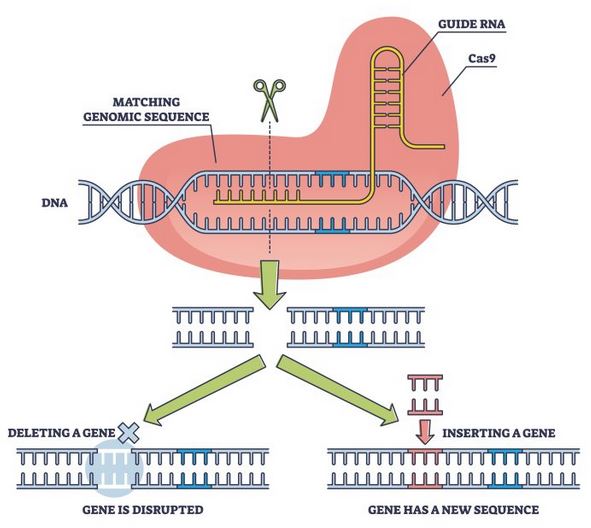Note4Students
From UPSC perspective, the following things are important :
Prelims level: https://www.thehindu.com/sci-tech/science/india-getting-close-to-developing-gene-therapy-for-sickle-cell-disease-say-officials/article68308487.ece

Why in the News?
- India is close to developing a gene therapy using CRISPR-Cas9, a gene-editing tool for sickle cell disease (SCD).
- SCD is a genetic blood disorder prevalent among the Scheduled Tribes.
What is Sickle Cell Disease?
- Sickle cell disease (SCD) is a group of inherited blood disorders caused by a genetic mutation in the hemoglobin-β gene located on chromosome 11.
- This mutation results in defective hemoglobin, which forms rod-like structures after releasing oxygen.
- As a result, red blood cells become rigid and assume a sickle shape.
- The disease is inherited in an autosomal recessive pattern, meaning both parents must carry the abnormal gene for a child to inherit it.
- Symptoms may not manifest immediately in newborns but can include extreme tiredness, fussiness, swollen hands and feet, and jaundice.
- Implications:
-
-
- The mis-shapen RBCs can block small blood vessels, leading to impaired blood flow and causing chronic anaemia.
- Individuals with SCD often experience acute pain episodes, severe bacterial infections, and tissue damage due to inadequate blood supply.
-
- Treatment:
-
- Presently treatment includes medications for pain relief, regular blood transfusions to replace damaged red blood cells.
- In rare cases, a bone marrow or stem cell transplant, which carries significant risks, is recommended.
Eliminating Sickle Cell Disease: Global and National Context
- This progress follows the approval of CRISPR-Cas9 technology by the U.S. Food and Drug Administration for a cell-based gene therapy to treat sickle cell disease in December 2023.
- One of the main challenges for India is to develop a cost-effective therapy, as part of its mission to eradicate sickle cell disease by 2047, launched by Prime Minister in July 2023.
- The mission aims to conduct over 7 crore screenings among vulnerable tribal populations across 17 States and Union Territories, with three crore screenings completed so far.
Back2Basics: CRISPR-Cas9 Gene Editing
|
PYQ:[2023] Consider the following statements in the context interventions being undertaken under Anaemin Mukt Bharat Strategy :
How many of the statements given above are correct? (a) Only one |
Get an IAS/IPS ranker as your 1: 1 personal mentor for UPSC 2024

